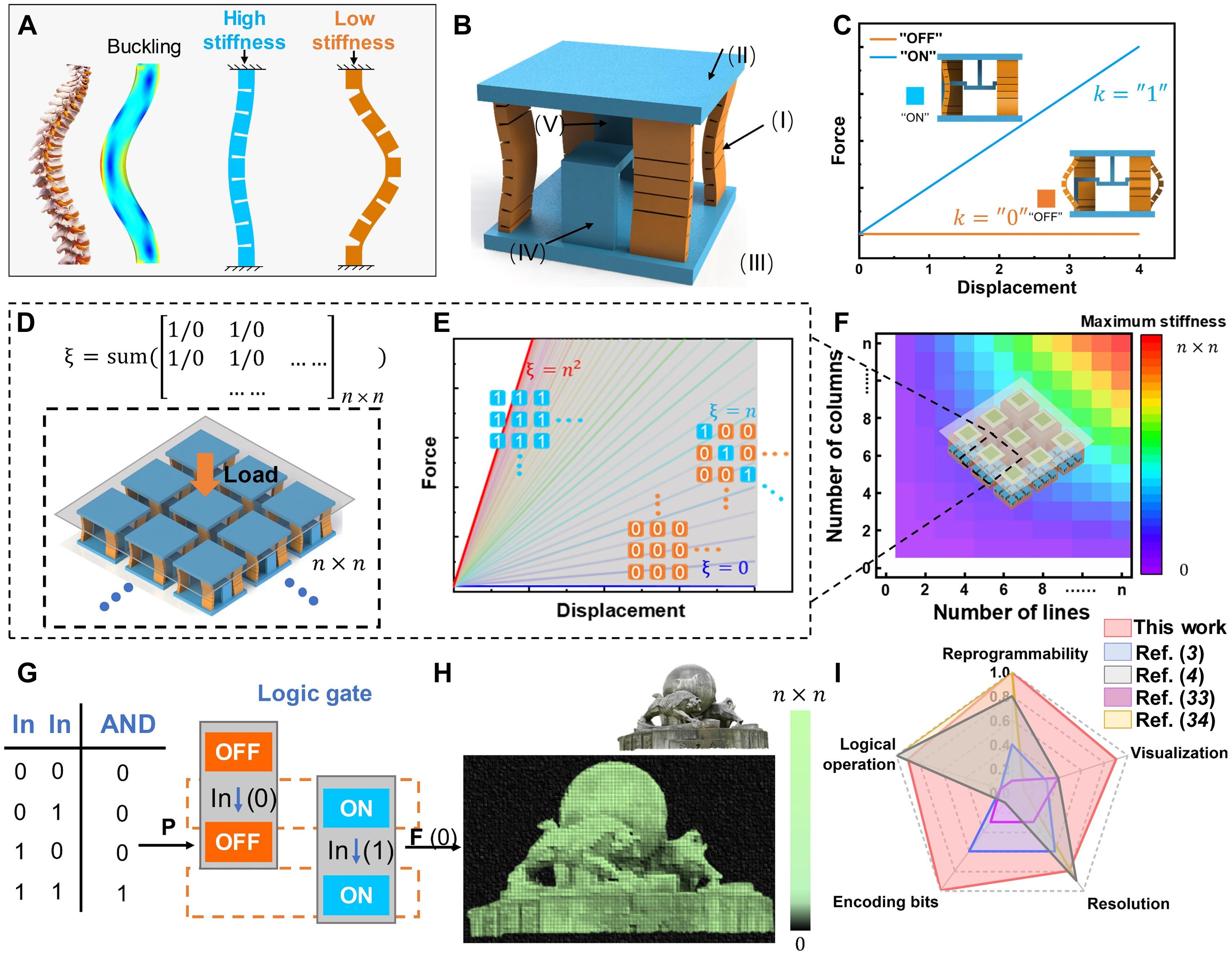Stiffness reprogrammable magnetorheological metamaterials inspired by spine for multibit visual mechanical information processing
IF 12.5
1区 综合性期刊
Q1 MULTIDISCIPLINARY SCIENCES
引用次数: 0
Abstract
Embedding information processing into mechanical metamaterials is conductive to constructing multifunctional mechanical systems, which has unique advantages to provide information processing platforms in extreme environments. However, achieving high-density, reprogrammable, and visually readable information processing in most mechanical metamaterials remains a challenge. Here, we report a multibit programming spine structure strategy to create a magnetorheological metamaterial with high-density, reprogrammable, and visually readable information encoding capacities. Inspired by spine features, the magnetorheological spine beams, exhibiting substantial stiffness variation by bistable transition, meticulously conceived the stiffness reprogrammable magnetorheological metamaterial (SRMM). The SRMM exhibits a large stiffness conversion capability (40-fold) and high-density information encoding performance (10-bit). Coupling with the mechanoluminescent materials, the mechanical information achieves visualization conveniently, which is attributed to the conversion of the stiffness data into optical signals through optical energy level transitions. Such stiffness-based magnetorheological metamaterial offers expansive information encoding spaces, stable operation capabilities, and convenient readout approaches, advancing mechanical information processing system design for extreme environments.

基于脊柱的多比特视觉机械信息处理的刚度可编程磁流变超材料
将信息处理嵌入到机械超材料中,有助于构建多功能机械系统,为极端环境下的信息处理提供平台,具有独特的优势。然而,在大多数机械超材料中实现高密度、可重新编程和视觉可读的信息处理仍然是一个挑战。在这里,我们报告了一种多比特编程脊柱结构策略,以创建具有高密度,可重新编程和视觉可读信息编码能力的磁流变超材料。受脊柱特征的启发,磁流变脊柱梁通过双稳态过渡表现出实质性的刚度变化,精心构思了刚度可编程的磁流变超材料(SRMM)。SRMM具有较大的刚度转换能力(40倍)和高密度的信息编码性能(10位)。与机械发光材料耦合,通过光能级跃迁将刚度数据转换为光信号,方便地实现了机械信息的可视化。这种基于刚度的磁流变超材料提供了广阔的信息编码空间、稳定的运行能力和方便的读出方式,推动了极端环境下机械信息处理系统的设计。
本文章由计算机程序翻译,如有差异,请以英文原文为准。
求助全文
约1分钟内获得全文
求助全文
来源期刊

Science Advances
综合性期刊-综合性期刊
CiteScore
21.40
自引率
1.50%
发文量
1937
审稿时长
29 weeks
期刊介绍:
Science Advances, an open-access journal by AAAS, publishes impactful research in diverse scientific areas. It aims for fair, fast, and expert peer review, providing freely accessible research to readers. Led by distinguished scientists, the journal supports AAAS's mission by extending Science magazine's capacity to identify and promote significant advances. Evolving digital publishing technologies play a crucial role in advancing AAAS's global mission for science communication and benefitting humankind.
 求助内容:
求助内容: 应助结果提醒方式:
应助结果提醒方式:


